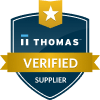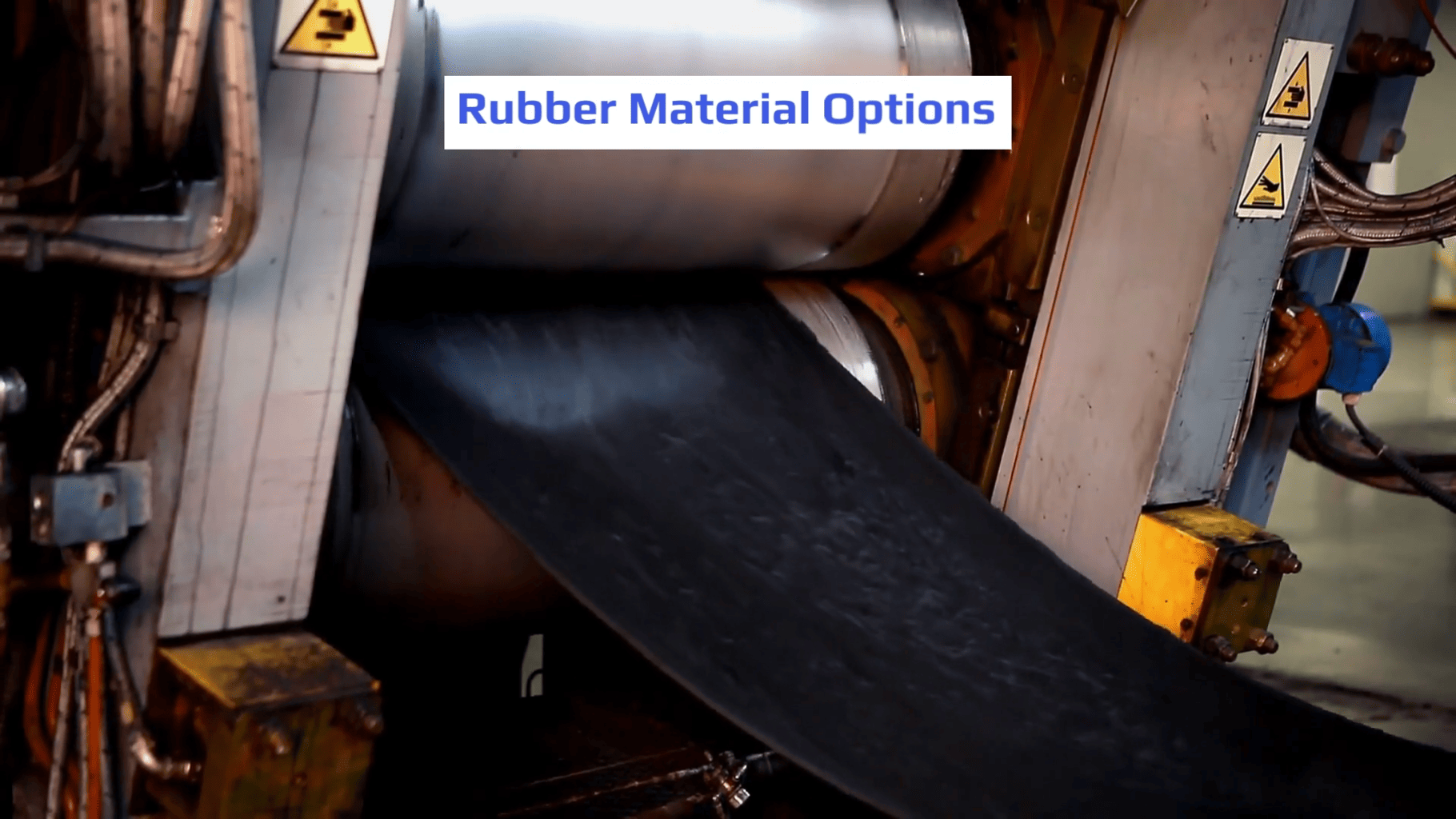As an industry leader in rubber products, Fournier Rubber & Supply Company has nearly a century of experience with natural and synthetic rubbers. This versatile material is available in many variations to meet diverse application requirements. To help you better select the most appropriate rubber material for your project, this page will discuss common types of rubber, their properties, and usages.
What is Rubber?
Rubber is a solid substance that is also highly elastic. Since it is easily stretched, it is used to create flexible products, such as rubber bands, tires, gaskets, and seals. There are many types of rubber, including natural options that are derived from plant sources, and synthetically developed rubbers. Rubber materials can also be called elastomers, which is a name derived from the term elastic polymers. Elastomers feature instantaneous recovery from compression and stretching, as well as excellent elongation and deformation capabilities.
Basic Properties of Rubber
While there are several types of rubber, each with distinct characteristics, they all share three common basic properties:
- Durability. Rubber materials are highly damage resistant and perform reliably even with exposure to abrasion, low temperatures, water, and high levels of impact.
- Elasticity. Rubber molecules are attached to one another, which allows them to return to their original position after a force stretches or compresses them. This characteristic is what causes rubbers to be so elastic.
- Thermal contraction. When rubber molecules are heated, they become even more entangled with one another, causing the material to contract. After the heat source is removed, the molecules return to their original state, allowing the rubber to regain its original state.
Common Uses of Rubber
Rubber is molded into numerous industrial and household products. It is used to produce hoses and tubing, as well as gaskets for electronics. It also provides the resilience needed for industrial applications, such as in the production of conveyor belts, rubber bearings, pipe seal rings, and floor mats.
Rubber is also an essential material for the transportation industry, where it plays a key role in tire production. Personal protective equipment (PPE) like gloves, weatherstripping, latex house paint, and sports equipment are just a few other common products made from rubber.
Common Types of Rubber
Fournier works with many types of rubber, each offering its own unique properties. These types include:
Natural Rubber
Natural rubber is produced by trees and obtained by tapping them, similar to the method used to collect sap for maple syrup. The trees produce latex, which is then processed to create a usable material. Natural rubber is capable of bonding with a large variety of substrates. It is a good choice for applications that require a high degree of elasticity and tensile strength. Natural rubber is also good at dampening vibrations.
A disadvantage of natural rubber is that it does not offer much resistance to UV radiation, heat, oils, or ozone. Additionally, in comparison to synthetic rubbers, it is typically more costly and its price is extremely variable.
Neoprene Rubber
Neoprene rubber is obtained by polymerizing chloroprene. While many types of rubber offer resistance to either petroleum products or weather conditions, neoprene is unique because it is resistant to all of these factors.
It withstands challenging weather conditions such as UV, ozone, and oxygen exposure, as well as petroleum products. However, it is not resistant to solvents and offers only moderate water resistance.
Silicone Rubber
Silicone belongs to its own category of rubbers that is outside of natural and synthetic varieties. Versatile and highly durable, silicone rubber is used to make a wide variety of consumer products. It is resistant to both high and low temperatures, remaining flexible even in extreme conditions.
Silicone is suitable for a large variety of manufacturing methods. It is commonly used by the medical industry, as well as in aerospace, automotive, and construction-related applications. Fournier uses silicone rubber to create high-performance silicone gaskets as well as flexible tubing and other components.
Nitrile Rubber
Also referred to as nitrile butadiene rubber, Buna-N, NBR, or acrylonitrile butadiene rubber, nitrile rubber is a synthetic material that is highly resistant to petroleum products like oil and gas. It also offers excellent abrasion resistance as well as tear resistance and a low compression set. However, nitrile rubber only performs well within a moderate temperature range. It does not perform well in applications that involve prolonged heat exposure or ozone.
EPDM Rubber
Ethylene propylene diene monomer (EPDM) is an excellent general-purpose synthetic rubber due to its resistance properties. EPDM is resistant to challenging weather conditions as well as water, ozone, mild acids, silicone oils, greases, and detergents. It’s also a strong, versatile, and easy-to-process material that is available at a relatively low cost.
Some disadvantages of EPDM are that it absorbs oils and has poor abrasion and tear resistance. It can fall apart when used in applications with exposure to petroleum-based lubricants and oils, mineral oils, or fuel. Fournier uses EPDM rubber to create standard and heavy-duty gaskets. We also offer EPDM-lined tubing for applications that require chemically resistant tubing solutions.
Styrene-Butadiene Rubber (SBR)
Styrene butadiene rubber (SBR) was one of the first developed synthetic rubbers and features many similar properties to natural rubber. It is petroleum based and features excellent abrasion resistance as well as good tear resistance and elongation properties. SBR is also resistant to non-petroleum-based fluids, electricity, cracks, odors, and heat.
SBR has many of the same disadvantages as natural rubber. It is not very resistant to oil or ozone and also has a low tensile strength. We offer SBR rubber sheets in a range of thicknesses, sold in bulk by the roll, or die cut into custom gaskets.
Butyl Rubber
A synthetic rubber prized for its low moisture and gas permeability, butyl rubber offers good electrical insulation properties, vibration dampening, as well as resistance to heat aging, tearing, UV radiation, ozone, and abrasion. It is also chemically inert, which means it will not react with other materials when combined.
Butyl rubber can be costly and challenging to process. For many applications, similar but more cost-effective materials can be suitable. Butyl rubber also provides poor resistance to petroleum and works best within a moderate temperature range. Fournier supplies butyl rubber in flexible, abrasion-resistant sheets. Butyl rubber sheets are commonly used in applications like inner tire liners, vacuum seals, molded gaskets, and more.
Fluorosilicone Rubber
Fluoroelastomer rubber, also known by the brand name Viton®, is a high-performance synthetic rubber. It is specially formulated for extreme temperature resistance and fluid exposure. Fluorosilicone rubber has low gas permeability and can withstand UV radiation, ozone, and exposure to temperatures up to 480 °F. It is commonly used to create gaskets, o-rings, and seals that must withstand extreme conditions.
A disadvantage of this material is its cost. Since fluoroelastomer rubbers are so specialized, they come at a higher price point than any other rubber. They are also poorly resistant to steam and hot water. Fournier creates custom o-rings from fluorosilicone rubber for a range of demanding applications.
Industrial Rubber Products from Fournier Rubber & Supply Company
Rubber materials are used to craft products for nearly every industry. As rubber product experts, Fournier can help you source the best material for your budget and performance needs, and obtain the high-quality components your application requires. To get started on your solution, request a quote from our team today. You can also learn more about the various types of rubber on our blog.
Ready to discuss your project?
Our team is here to help — reach out now if you have questions about our products, or would like to place an order.
Reach Out Today




